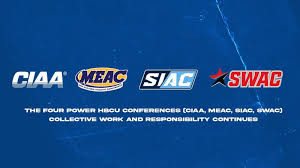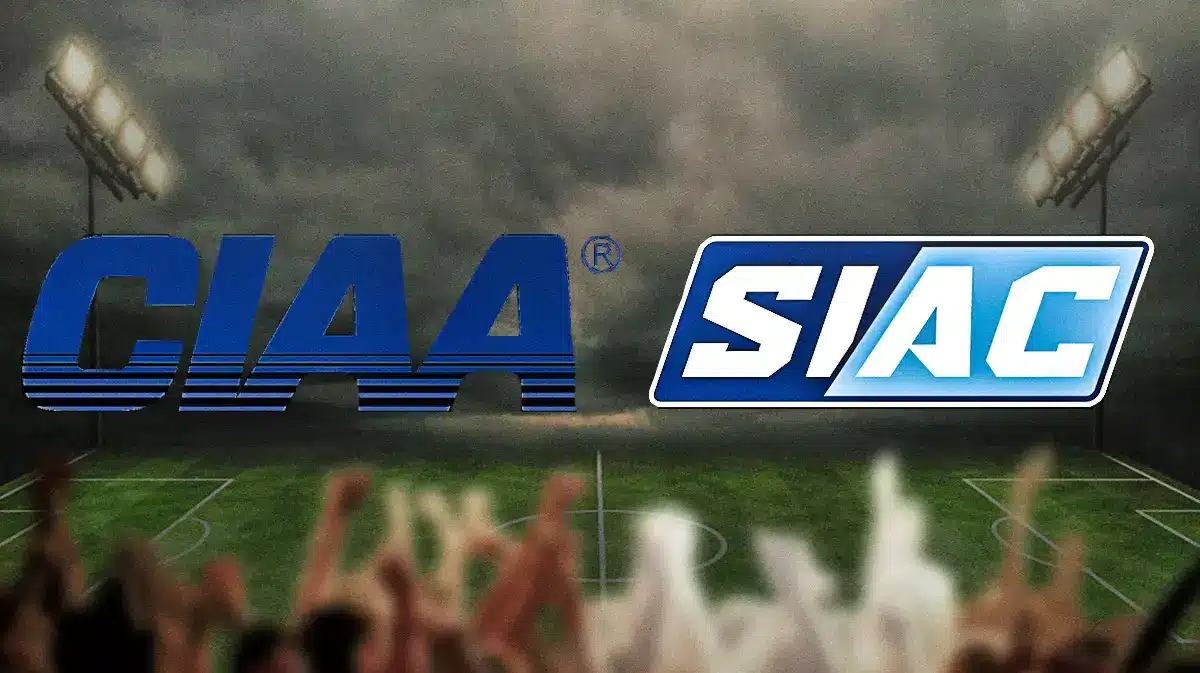get these nets
Veteran
HBCU Conferences Band Together to Bring More Funding, Empowerment and Opportunity to Athletes

- Feb 10, 2023
Now, the four HBCU conferences (MEAC, SWAC, SIAC, CIAA) are aiming for a strategic alignment in what they’re calling the Power Four, launched late in 2022.
“I think we’re for power,” CIAA commissioner Jacqie McWilliams Parker says. “That’s what we stand for. To empower our students, our HBCU institutions, to advocate, to live our best lives in the communities that we serve and give these student athletes an opportunity to play at HBCUs. And it’s not for everyone. We get that as well. But for us, it’s what I do every single day. It’s passion work.”
This is a business agreement that has more underlying meaning than a reactive pursuit of football scheduling agreements. The four leagues are much more alike than they are different, and even though two compete at the Division II level (SIAC, CIAA) and two are on the FCS side of Division I (MEAC, SWAC), the ties that bind are cultural due to the impact HBCUs have beyond college sports.
There are 34 Division I leagues and 23 Division II leagues, and there’s strength in working together as a quartet because of their shared history, goals and issues. HBCUs were founded so Black people could receive an education during an era in the United States when they were barred from attending white institutions.
Due to institutional racism, public HBCUs have suffered from chronic underfunding by their state governments for decades. The shared history applies to the conferences, as well. SWAC schools Florida A&M and Bethune-Cookman have both been MEAC members at various points in their history. The 2022 MEAC football champion, North Carolina Central, spent the 1980s and ’90s in the CIAA.

Dale Zanine/USA TODAY Sports
The Power Four initiative was born out of the spirit of collaboration during the COVID-19 pandemic and around how to approach NIL legislation when it launched in 2021. McWilliams Parker is the de facto chair and has been in her role with the CIAA since ’12. She and SWAC commissioner Charles F. McClelland (who has held the post since ’18) bring experience in the commissioner’s seat, while the MEAC’s Sonja Stills and the SIAC’s Anthony Hollman both started in their roles in ’22. All four had worked in HBCU sports in various capacities and have decades of combined experience.
During a meeting in August around how to deepen HBCU ties with the NFL, the four commissioners met to figure out how to work with one another formally.
“Our real opportunity is to align ourselves with the common values of our membership,” Hollman says. “We are not in competition with each other.”
The group now has standing monthly meetings and is in the initial stages of developing agenda items for this year. It is considering ways to collaborate with Congress to ensure any future legislation—which the NCAA is actively seeking from Capitol Hill—is crafted to include the needs of HBCUs. Other, more front-facing work involves funding, a consistent need across HBCUs of any size. The Power Four hope to show a more united front in pushing to be the first point of contact to avoid the problem of third-party promoters circumventing the leagues to stage events with schools—an issue that can make everyone look bad when they fall apart.
“When we look at individuals who go to the NCAA and ask for these waivers to have these promotional games, they approve it, but we haven’t said that we support the event,” Hollman says. “So it’s collaborating with [promoters] and saying, ‘Hey, before you approve of an event, let us first decide if we want to support this event.’ And it’s like Commissioner McClelland said: You don’t have a third party going to the NCAA saying the SEC commissioner Greg Sankey said they support this event. No, you go and ask the commissioner.”
There is also the aspect of dealing with corporate America so the leagues can spread money across institutions and do so directly. Donations can be directed anywhere, as universities have many needs in addition to athletics, but corporate dollars that go to conferences are routed directly to athletics. Black colleges are not a monolith—just like Vanderbilt is different from LSU, Howard and Coppin State have different needs.
“I think some of the problems, too, is corporate America telling us what we need instead of asking us what we need,” Still says. “They want to be involved with esports, and say ‘We’re going to give you scholarships.’ Scholarships only hit one or two people. You’re not leaving a legacy when the institution needs infrastructure to put together an esports lab or center with equipment, so that everybody’s playing on the same platform, where you have coaches that help with recruitment as you tie that to STEM on the academic side and other elements. That’s what we need.”
Partnerships already exist between the leagues, including the Week 0 MEAC/SWAC Challenge and postseason Celebration Bowl, both of which have benefited by ESPN’s backing and corporate investment. According to McClelland and Stills, there are no plans to merge the two leagues—as has been mused about—and working together is the way forward. Limiting access to NCAA championships, and the revenue that comes with it, make merging a “nonstarter,” according to Stills.
“We think that it’s important to have a strong MEAC,” McClelland says. “We have the Celebration Bowl, and we will do everything that we can in support of the MEAC growing and continuing to be the successful conference that it has been for all of these decades.”
The SIAC and CIAA have considered following the lead of the FCS conferences with a potential basketball challenge and a Week 0 football game pitting the reigning champions of each conference. And other work regarding football schedules involves making sure there’s a price floor for lucrative out-of-conference games so one school doesn’t undercut another.
HBCUs staying viable is vital to the fabric of college sports, work the four leagues plan to do together moving forward.
@CoryMack @Originalman @Cereal_Bowl_Assassin @BigAggieLean. @staticshock @DrBanneker @R.E.N. Spells Ren
Last edited:




